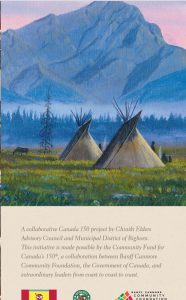This article makes connections between Hip Hops political roots on the West Coast of the United States in the 1980’s to the current Indigenous Hip Hop in Australia:
Given the diversification of the Australian music scene artist base, the acceptance of international sounds on Australian national radio and the ease of access to technology in today’s climate, Indigenous artists are taking the mantra of Hip-hop’s golden political and rebellious era and showcasing it through Australia’s mistreatment, genocide and prosecution of First Nations People. White hip-hop has existed in Australia, but it did not channel the original ethos of the genre thematically. Now, the genre’s being fully utilised a renaissance of Australian hip-hop is occurring.
The article highlights artists such as Ziggy Ramos who are writing socially conscious lyrics about injustices happening in Australia to the Indigenous communities there:


 My hometown, Okotoks. The name Okotoks comes from a
My hometown, Okotoks. The name Okotoks comes from a 

/cloudfront-us-east-1.images.arcpublishing.com/tgam/FWC2LXVYBNCSLDNMWODHGEXDA4.JPG)
